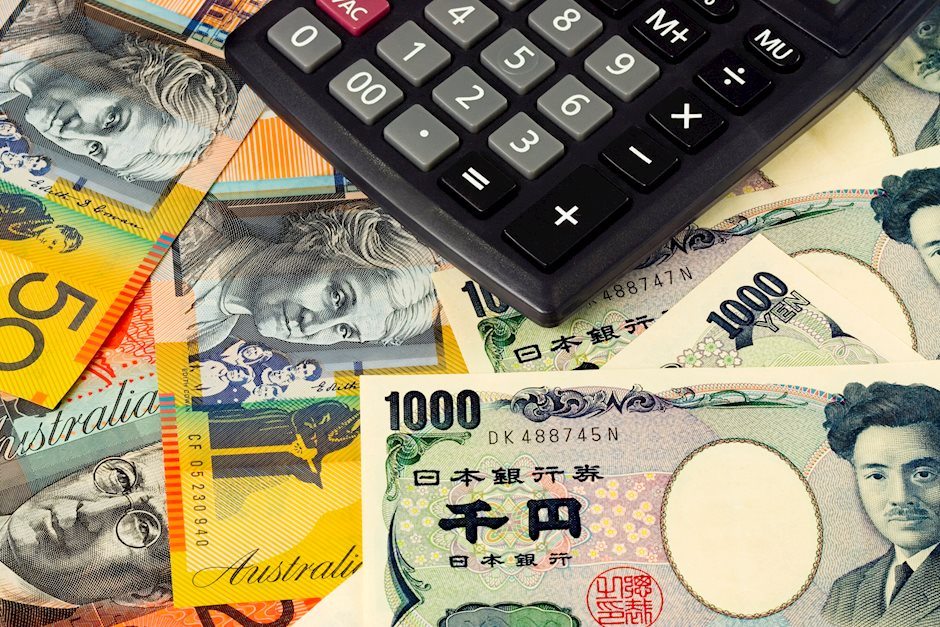AUD/JPY holds above 97.50 amid improved Chinese Retail Sales, BoJ rate uncertainty
- AUD/JPY gains momentum near 97.55 in Thursday’s Asian session, up 0.36% on the day.
- The improved Chinese July Retail Sales boost the Aussie.
- The BoJ rate hike uncertainty might weigh on the Japanese Yen.

The AUD/JPY cross attracts some buyers around 97.55 during the Asian trading hours on Thursday. The upbeat Chinese July Retail Sales data provides some support to the Australian Dollar (AUD). Investors await Reserve Bank of Australia (RBA) Governor Michele Bullock's speech on Friday for fresh catalysts.
Data released by the National Bureau of Statistics of China on Thursday showed that China’s Retail Sales rose by 2.7% YoY in July, compared to 2.0% seen in the previous month. This figure was better than the market expectations. Meanwhile, Chinese Industrial Production arrived at 5.1% YoY in July from 5.3% in June, below the market consensus of 5.2%. The Aussie edges higher in response to the reports. However, the Chinese economy remained fragile, with recent government measures providing only a minor boost to private spending. This is likely to weigh on the AUD in the near term as China is Australia's major trading partner.
Elsewhere, Australia’s Unemployment Rate rose to 4.2% in July from 4.1% in June, the Australian Bureau of Statistics (ABS) revealed on Thursday. Economists had expected the rate to remain unchanged at 4.1%. Markets are now fully pricing in the chance of a 25 basis points (bps) rate cut by the RBA final meeting of the year in December, according to the ASX rates tracker.
On the JPY’s front, the uncertainty over the timeline of the Bank of Japan (BoJ) rate hike weighs on the Japanese Yen (JPY). On Thursday, Japanese Economy Minister Yoshitaka Shindo said that the government will work closely with the BoJ to carry out flexible macroeconomic policy management. BoJ Governor Kazuo Ueda stated that the Japanese central bank will keep raising rates, and adjust the degree of easing if the current economic and price outlook is realized.
Australian Dollar FAQs
One of the most significant factors for the Australian Dollar (AUD) is the level of interest rates set by the Reserve Bank of Australia (RBA). Because Australia is a resource-rich country another key driver is the price of its biggest export, Iron Ore. The health of the Chinese economy, its largest trading partner, is a factor, as well as inflation in Australia, its growth rate and Trade Balance. Market sentiment – whether investors are taking on more risky assets (risk-on) or seeking safe-havens (risk-off) – is also a factor, with risk-on positive for AUD.
The Reserve Bank of Australia (RBA) influences the Australian Dollar (AUD) by setting the level of interest rates that Australian banks can lend to each other. This influences the level of interest rates in the economy as a whole. The main goal of the RBA is to maintain a stable inflation rate of 2-3% by adjusting interest rates up or down. Relatively high interest rates compared to other major central banks support the AUD, and the opposite for relatively low. The RBA can also use quantitative easing and tightening to influence credit conditions, with the former AUD-negative and the latter AUD-positive.
China is Australia’s largest trading partner so the health of the Chinese economy is a major influence on the value of the Australian Dollar (AUD). When the Chinese economy is doing well it purchases more raw materials, goods and services from Australia, lifting demand for the AUD, and pushing up its value. The opposite is the case when the Chinese economy is not growing as fast as expected. Positive or negative surprises in Chinese growth data, therefore, often have a direct impact on the Australian Dollar and its pairs.
Iron Ore is Australia’s largest export, accounting for $118 billion a year according to data from 2021, with China as its primary destination. The price of Iron Ore, therefore, can be a driver of the Australian Dollar. Generally, if the price of Iron Ore rises, AUD also goes up, as aggregate demand for the currency increases. The opposite is the case if the price of Iron Ore falls. Higher Iron Ore prices also tend to result in a greater likelihood of a positive Trade Balance for Australia, which is also positive of the AUD.
The Trade Balance, which is the difference between what a country earns from its exports versus what it pays for its imports, is another factor that can influence the value of the Australian Dollar. If Australia produces highly sought after exports, then its currency will gain in value purely from the surplus demand created from foreign buyers seeking to purchase its exports versus what it spends to purchase imports. Therefore, a positive net Trade Balance strengthens the AUD, with the opposite effect if the Trade Balance is negative.
Author

Lallalit Srijandorn
FXStreet
Lallalit Srijandorn is a Parisian at heart. She has lived in France since 2019 and now becomes a digital entrepreneur based in Paris and Bangkok.

















